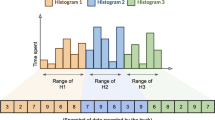Abstract
The prediction of rail crack length propagation plays a crucial role in the maintenance and safety assessment of materials and structures. Traditional methods rely on physical models and empirical equations such as Paris’ law, which often have limitations in capturing the complex nature of crack growth. In recent years, machine learning techniques, particularly Recurrent Neural Networks (RNNs), have emerged as promising methods for time series forecasting. They allow to model time series data, and to incorporate exogenous variables into the model. The proposed approach involves collecting real data on the French rail network that includes historical crack length measurements, along with relevant exogenous factors that may influence crack growth. First, a pre-processing phase was performed to prepare a consistent data set for learning. Then, a suitable Bayesian multi-horizons recurrent architecture was designed to model the crack propagation phenomenon. Obtained results show that the Multi-horizons model outperforms state-of-the-art models such as LSTM and GRU.
Access this chapter
Tax calculation will be finalised at checkout
Purchases are for personal use only
Similar content being viewed by others
References
Bonniot, T., Doquet, V., Mai, S.H.: Mixed mode II and III fatigue crack growth in a rail steel. Int. J. Fatigue 115, 42–52 (2018)
Fang, X.-Y., Zhang, H.-N., Ma, D.-W.: Influence of initial crack on fatigue crack propagation with mixed mode in U71Mn rail subsurface. Eng. Failure Anal. 136, 106220 (2022)
Holt, C.C.: Forecasting trends and seasonals by exponentially weighted moving averages. ONR Memorandum 52(52), 5–10 (1957)
Gardner Jr., E.S.: Exponential smoothing: the state of the art. J. Forecasting 4(1), 1–28 (1985)
Kalekar, P.S., et al.: Time series forecasting using holt-winters exponential smoothing. In: Kanwal Rekhi school of information Technology 4329008.13, pp. 1–13 (2004)
Gardner Jr., E.S., McKenzie, E.: Note–Seasonal exponential smoothing with damped trends. Manage. Sci. 35(3), 372–376 (1989)
Bartholomew, D.J.: Time Series Analysis Forecasting and Control (1971)
Hochreiter, S., Schmidhuber, J.: Long short-term memory. Neural Comput. 9(8), 1735–1780 (1997)
Cho, K., et al.: Learning phrase representations using RNN encoderdecoder for statistical machine translation. In: arXiv:1406.1078 (2014)
Vaswani, A., et al.: Attention is all you need. In: Advances in Neural Information Processing Systems 30 (2017)
Kou, X., Pei, C., Chen, Z.: Fully noncontact inspection of closed surface crack with nonlinear laser ultrasonic testing method. Ultrasonics 114, 106426 (2021)
Kendall, A., Gal, Y.: What uncertainties do we need in bayesian deep learning for computer vision? In: Advances in Neural Information Processing Systems 30 (2017)
Srivastava, N., et al.: Dropout: a simple way to prevent neural networks from overfitting. J. Mach. Learn. Res. 15(1), 1929–1958 (2014)
Leyli-Abadi, M., et al.: LIPS-Learning Industrial Physical Simulation benchmark suite. Adv. Neural. Inf. Process. Syst. 35, 28095–28109 (2022)
Lara-Benitez, P., Carranza-Garcia, M., Riquelme, J.C.: An experimental review on deep learning architectures for time series forecasting. Int. J. Neural Syst. 31(03), 2130001 (2021)
Kuleshov, V., Fenner, N., Ermon, S.: Accurate uncertainties for deep learning using calibrated regression. In: International Conference on Machine Learning. PMLR, pp. 2796–2804 (2018)
Author information
Authors and Affiliations
Corresponding author
Editor information
Editors and Affiliations
Rights and permissions
Copyright information
© 2023 The Author(s), under exclusive license to Springer Nature Switzerland AG
About this paper
Cite this paper
Ouerk, S.Y., Van, O.V., Yagoubi, M. (2023). Rail Crack Propagation Forecasting Using Multi-horizons RNNs. In: Ifrim, G., et al. Advanced Analytics and Learning on Temporal Data. AALTD 2023. Lecture Notes in Computer Science(), vol 14343. Springer, Cham. https://doi.org/10.1007/978-3-031-49896-1_17
Download citation
DOI: https://doi.org/10.1007/978-3-031-49896-1_17
Published:
Publisher Name: Springer, Cham
Print ISBN: 978-3-031-49895-4
Online ISBN: 978-3-031-49896-1
eBook Packages: Computer ScienceComputer Science (R0)





